Wassily Wassilyevich Kandinsky was born in Moscow in 1866 to a well-educated, upper-class family of mixed ethnic origins. His father was born close to Mongolia, while his mother was from Moscow. A large part of Kandinsky’s childhood was spent in Odessa, a cosmopolitan city inhabited by Western Europeans, Mediterranean People and various other ethnic groups. Kandinsky showed an extraordinary sensitivity to the stimuli of sounds, words and colors at an early age. His father encouraged his unique talent for art and enrolled him in private drawing lessons, as well as piano and cello lessons.
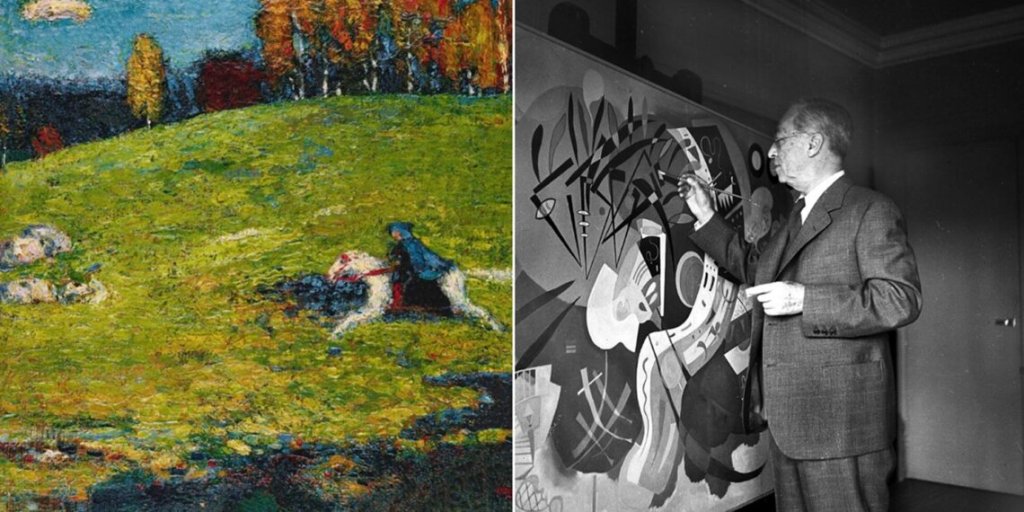
Despite his early acquaintance with art, Kandinsky did not turn to painting until he turned 30. Instead, in 1886, he went to Moscow University to study law, ethnography and economics. Despite the legal focus of his academic pursuits, Kandinsky’s interest in the symbolism of color and its impact on the human psyche increased during his time in Moscow. In particular, an ethnographic research trip to the Vologda region in northwestern Russia in 1889 ignited an interest in folk art, which Kandinsky carried with him throughout his career. after receiving his diploma in 1892, he started his law studies career by teaching at the university.
Kandinsky gave up his law teaching career in 1896 to attend art school in Munich. During his first two years in Munich, he studied at Anton Azbe’s art school and studied under Franz von Stuck in 1900. At Azbe’s school, he met people such as Alexei Jawlensky, who introduced Kandinsky to the artistic avant-garde in Munich. in 1901, Kandinsky, along with three other young artists, founded the “Phalanx”, an artists’ association that opposed the conservative views of traditional art institutions.
Phalanx expanded to include an art school where Kandinsky taught and an exhibition group. During one of his classes at the Phalanx School, he met and began a relationship with his student Gabriele Munter, who would become his friend for the next 15 years. Traveling around Europe and North Africa with Munter from 1903 to 1909, Kandinsky became familiar with the growing expressionist movement and developed his own style based on various artistic sources he witnessed during his travels.
in 1911, one of Kandinsky’s paintings was rejected by the Neue Kunstlervereinigung Munchen exhibition. After that, together with Franz Marc, they organized a rival exhibition and founded the Blue Horseman, an association of nine expressionist artists
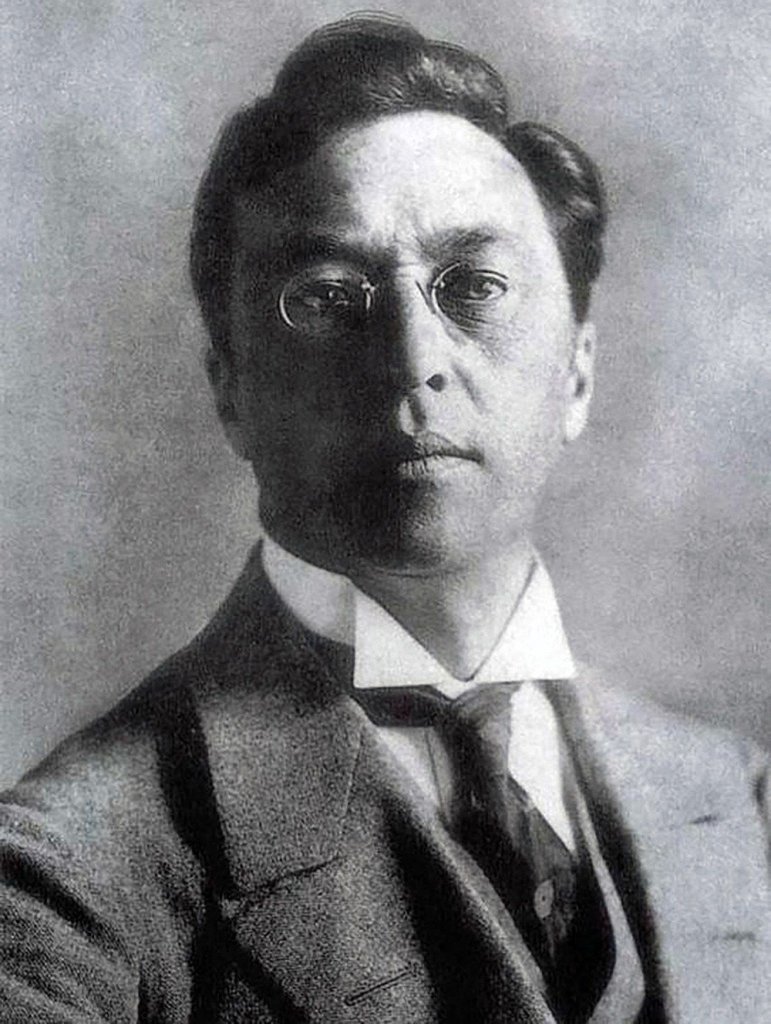
Although their goals and approaches differed from artist to artist, the group generally believed in the promotion of modern art, the possibility of spiritual experience through the symbolic connotations of sound and color. These were two of Kandinsky’s favorite subjects. Despite the similarity between the band’s nickname and the title of Kandinsky’s 1903 painting, the artists actually achieved the name “Blue Horseman” as a result of the combination of Marc’s love for horses and Kandinsky’s interest in the symbolism of the rider. Dec. One of the biggest reasons for this was the passion of both artists for the color blue.
During their short tenure, the band published an anthology and held three exhibitions. In addition, Kandinsky published On Spirituality in Art (October 1911), the first theoretical treatise on abstraction, which expressed the theory that the artist is a spiritual being who communicates through line, color and composition and is influenced by them. During this period, he produced both abstract and figurative works, but expanded his interest to non-objective painting. Composition VII (1913) was an early example of the synthesis of spiritual, emotional and non-referential form through complex patterns and bright colors. the outbreak of the First World War in 1914 led to the disbandment of the Blue Cavalry. However, despite their short tenure, the band initiated and was deeply inspired by the highly influential German expressionist style.
After Germany declared war on Russia, Kandinsky was forced to leave the country. He traveled to Switzerland and Sweden with Munter for almost two years, but returned to Moscow in early 1916, which effectively ended their relationship. In Moscow he married Nina Andreevskaia, the young daughter of a tsarist colonel. While there, he not only became familiar with the art of constructivists and suprematists such as Vladimir Tatlin and Kazimir Malevich, but also lived in the same building with Aleksander Rodchenko and met other avant-garde intellectuals such as Naum Gabo, Lyubov Popova and Varvara Stepanova.
With the October Revolution in 1917, Kandinsky’s plans to build a private school and studio were disrupted by the communists’ redistribution of private wealth, and instead he worked with the new government to develop art organizations and schools. However, his search for spirituality in art did not coincide with the utilitarian aesthetics advocated by the young government and the artists he adopted.
when architect Walter Gropius invited Kandinsky to Germany to teach at the Weimar Bauhaus in 1921, Kandinsky accepted the offer and moved to Berlin with his wife and gained German citizenship in 1928. As a member of the innovative school, Kandinsky’s philosophy of art focused more on the importance of art. in 1926, he published his second major theoretical work, Point and Line to Plane, in which he outlined his ideas about the ”science of painting”. Both in his work and in his theory, he turned from the romantic, intuitive expression of his pre-war canvases to an emphasis on constructively organized compositions.
When the Nazis closed the Bauhaus school in 1933, Kandinsky was also forced to leave his home in Germany and moved to France, where he would spend the rest of his life.
He and his wife Nina settled in a small apartment in the Paris suburb of Neuilly-sur-Seine and obtained French citizenship in 1939. While in France, his style changed again and he experimented with biomorphic forms that were more organic than before. Although he continued to paint until his last year, Kandinsky’s production slowed down during the war, and his art fell out of favor as reference images of cubism and surrealism dominated the Parisian avant-garde. Although aesthetics was at the forefront, Kandinsky continued to develop his style and revisited many of his previous themes and styles during this period. He synthesized the elements of all his works into large and complex works. His late style combined the expressive palette of his first non-objective Compositions of the early 1910s with the more structured elements he explored while at the Bauhaus and the biomorphic forms popularized by surrealists such as Joan Miró and Jean Arp.
The Nazis confiscated 57 of his canvases during their purge of ”corrupt art” in 1937, but despite the fascist ban on his art, the American rich (especially Solomon R. Guggenheim) eagerly collected his abstract works. His work became the key to shaping the mission of the museum, which the Guggenheim plans to dedicate to modern, avant-garde art. Kandinsky, who has more than 150 works in the museum’s collection, became known as the “patron saint of the Guggenheim”. Wassily Kandinsky died in France in December 1944.
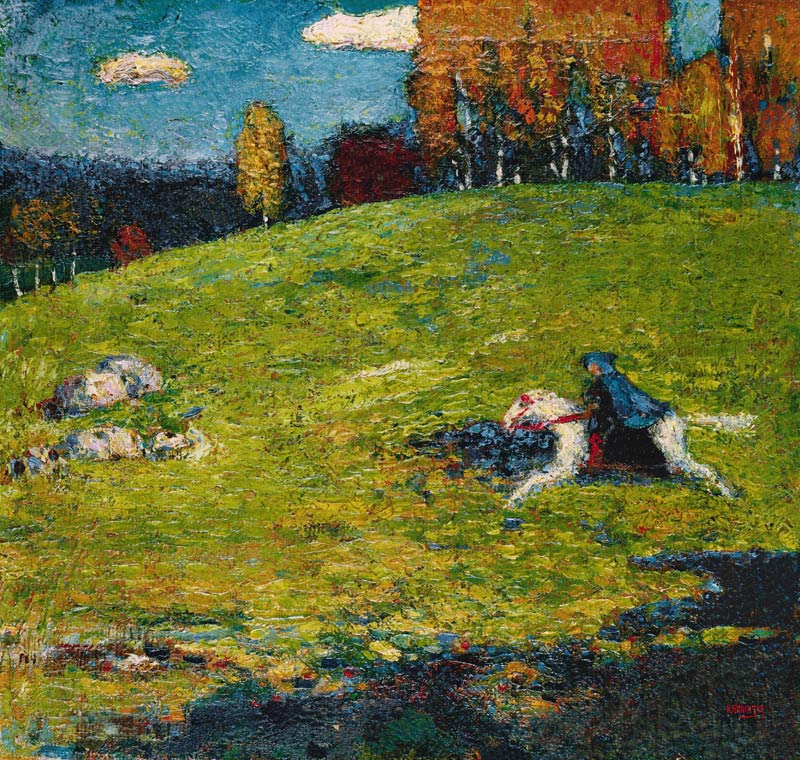
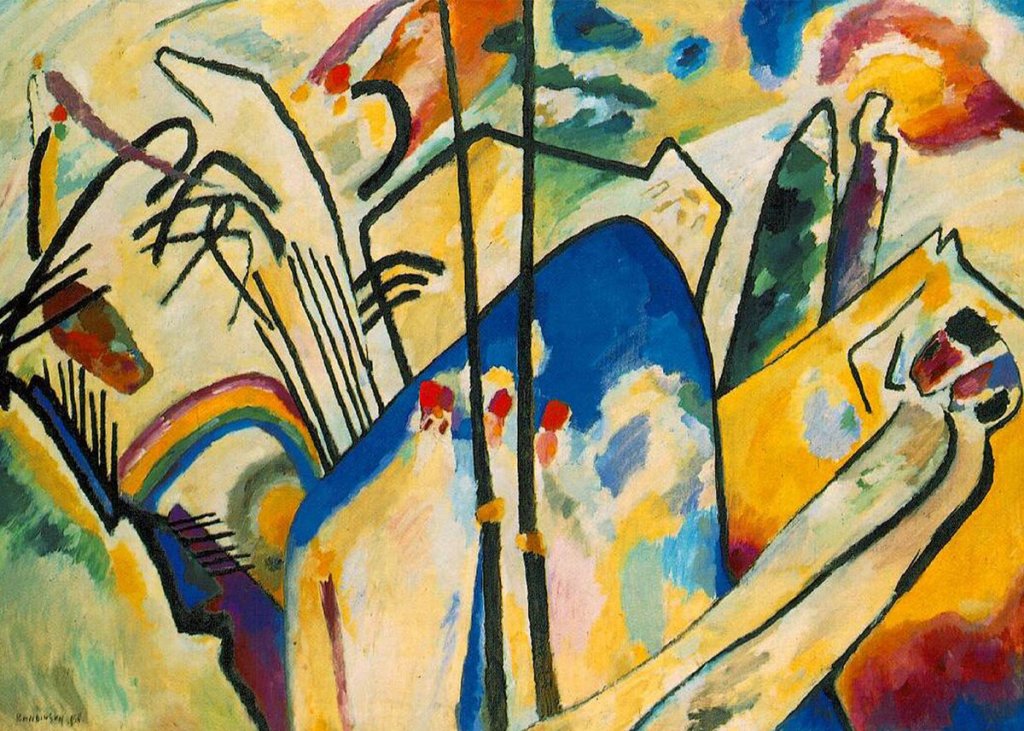
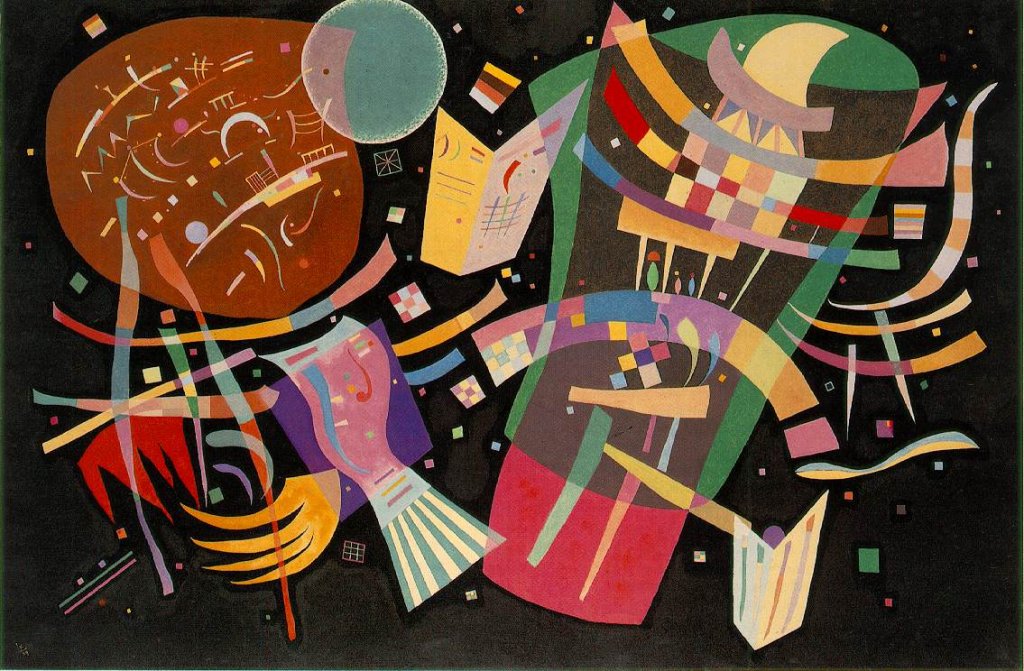
0 Comments